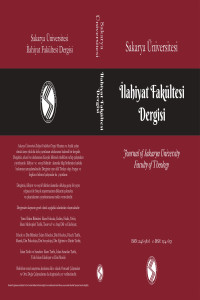Bir Çeviri Sorunsalı Olarak Kur’ân’da Geçen İşaret İsimlerinin Gösterim Türleri Bağlamında Yorumlanması
Interpretation of Demonstrative Pronouns in The Qur'ān as a Translation Problem in Terms of Types of Deixis
Author(s): Yusuf AkyüzSubject(s): Language and Literature Studies, Theoretical Linguistics, Qur’anic studies
Published by: Sakarya üniversitesi
Keywords: Arabic Language and Rhetoric; Types of Deixis; Reference; Demonstrative Nouns; Context;
Summary/Abstract: Deixis is the thing referred to by linguistic units outside the text or the discourse. The act of demonstrating or indicating the elements of a state through gestures or linguistic units is called deixis. Deictic is the name given to linguistic elements such as pronouns, demonstrative nouns and adverbs, which refer to the personal, spatial or temporal aspects of a speech act and which are, therefore, all directly related to the context surrounding its act of communication. Since the references of the deicitc expressions can only be identified within the context of actual communication, the subject is considered as a part of the pragmatics. This study aims to analyse the demonstrative nouns used in the Qur’anic verses within the context of deixis and types of deixis, which are research areas of pragmatics, and to identify the types of deixis used in the Qur’an. This study also aims to provide insight into how to present the references of demonstrative nouns, especially in Qur’anic translations, to be understood correctly by the readers. This is because the translations of the Qur’an are presented in written form, and the references of the deictic units are not expressed clearly in some of them. In this case, it is assumed that the reader might have difficulty understanding the meanings of the deictic such as “this, to this, these”. This study, firstly by studying deixis and its types from the modern linguistics and pragmatics resources, aims to form a conceptual framework. After the first chapter, upon which the main problem of the study will be built, is completed, the demonstrative nouns are analysed in terms of their structural and referential aspects within balāg̲h̲a and tafsīr sources, classical Arabic language nahw sources being in the first place. After the obtained data is analysed, their references are determined by associating the demonstrative nouns in Qur’anic verses with types of deixis, anaphora and cataphora. In this direction, firstly, the demonstrative nouns in the Qur’an will be identified, and the type of deixis will be explained by providing one example for each one of the demonstrative nouns in terms of their referential variety. For this purpose, this study highlights the demonstrative nouns which cannot be directly understood but only can be identified by checking the context. That is, the demonstrative nouns that take adjectives or are adjectives themselves will not be included in the scope. The references to these nouns existing in the verses will be specifically analysed within the classical tafsīr works. This study is significant as it reveals the references of demonstrative nouns by analysing the types of deixis in order to understand the Qur’an more accurately. Though there are various studies regarding demonstrative nouns, there are no studies found analysing the references of these nouns according to their types of deixis.
Journal: Sakarya Üniversitesi İlahiyat Fakültesi Dergisi (SAUIFD)
- Issue Year: 25/2023
- Issue No: 48
- Page Range: 427-458
- Page Count: 32
- Language: Turkish

